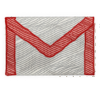Through my journey of creating a small business solely by myself, I have been taught many things; some of those I am sharing with you below as an exclusive feature that I believe will assist you with your conglomerate dreams.
1. Utilize an About Us page to highlight your small business personality; this page should only contain relevant information to spotlight your small business. This page should properly use three graphics also of relevance. You should list your business e-mail information, business phone/fax number, and other contact details; if you have social platforms list them also; do this on a sidebar style or at the bottom. To add all pages in addition to this, should have your contact information; located in the footer location. You should always use a single electronic mailing address for your small business website.
2. Develop a help and support page for your small business website, you always want to show your growing audience that you care about them; so encourage the use of website tech support for frequently asked questions. This page must be made properly and have fanatical relevance. Your business email displayed properly or a contact form with specific questions prior to an initial question box to allow details of the question to be made; this form should maintain your professionalism and requests should be accurately answered in prompt time.
2a. As a small business owner starting out, many things need to be known; for example the fact that you will ascertain a number of legitimate questions. For each new question that you obtain by email copy the question and your exact accurate answer to your support website page. This will build growth and also reflect your professionalism to your audience; remember to categorize each and use a search feature for this website extension.
3. Per every page on your small business website dress the site up so that it is aesthetically pleasing to the viewers eyes, this will keep traffic flowing. On every page of your website you need a page header, which is a custom creation that details your site name, an optional short description, and pleasing graphics that tie into your overall website; headers should blend in not stand out. All headers should be sized to meet your page needs and not overpower your small business website. You will be looking here to create a memorial moment to attract attention and desire of the diverse viewing audience; keep that in mind but appeal to your target audience. Professionals do not use animated graphics or binkies of GIF format by reason of traffic loss due due to nonprofessional displays.
3a. I myself am just starting my small business, starting out is not easy and it takes a great deal of time. Believe it or not a website of any nature must follow website etiquette; some of which will be pointed towards in this blog. Do the best for yourself and your site, research “professional website etiquette” on Google and pay close attention to what is being discussed; without proper understanding your website may very well be a failure but with technological understanding your indefinite success is on tap to your dreams.
3b. Professional business websites must, at all times on all pages, maintain a clean and fresh appearance; keep a white background as white is more appealing. You may spice up your font, but typically you will want to use a font that is fairly common and easy to read; including an appropriate size. Keep your fonts the same on each page of your website and limit the fonts that you use, it is accepted to only use one font per blog post; if blogging is an option for your small business. You may be tempted to download a lavish font from a third party website, remember that your audience will not see this font display on their computer if it not installed to their computer. You do not wish to force others to download the fonts you use to see pages as intended. Stick with the supplied website choices for font families and dress this up with an acceptable color, colors should only be easily tied into your background; but above all readable. Never use a blue font as blue is a reserved color. While graphics used on images do not count towards font limitations and can be seen by *all* a professional website should limit these to 1-2.
3c. Links should always appear in blue, this same color of blue should be used on each page that makes up the whole small business website you take pride within. Links should always be underlined on all pages. I cannot stress to you enough that outside links should open in a new tab; another choice is to have your outside link open in a new window which may stimulate trouble on an older outdated computer with a slow connection -- if this occurs your viewers with such problems may not return, thus traffic is lost. One a user clicks on your small business website’s link, in blue, you should opt to change visited link coloring in your website settings; I typically use a complimentary color to the blue of the website link that must be used. All links should always be underlined. Professional small business pages should never use link exchanges.
4. All content on small business pages must be spelled correctly, as a journalist by trade turned product reviewer a rule of thumb I use is prior to publishing proof 3 times. The perfectionist in my brain even will proof once after publishing. Misspelled items are linked with a decrease in traffic but most importantly lost revenue. What you write and how you write it reflects on you, the professional business owner. In addition you must maintain proper language, syntax, and grammar on all pages and in all textual projects. Also remember that the eyes of new media have changed as well as attention spans, format your content so it is easy to scan and effortless to read; short is not always better thus this is where the formatting comes into play.
5. Plagiarism is illegal and if pressed punishable by law, as a small business owner I fail to see my professional peers stealing text. It must be highlighted, however, that you must protect your blogs/articles/content from plagiarism by other substandard unprofessional. This can simply be done by registering for a copyright and placing the copyright data at the end of each blog entry if applicable for your website; or at the bottom of each webpage so that it is visible as a disclaimer notification. Remember photographs are also subject to plagiarism as is podcasts, videos, music, and unique ideas by the updated definition in July 2009.
6. Small business sites must have site navigation, this allows the viewers to easily navigate the page; sitemaps should be pleasing to the eye and placed in the same spot on each webpage of the website. Navigation graphics are great. An additional link to the sitemap should be placed in the footer as a method to return to the navigation. It is most important for your audience of viewers to find their way home so when a viewer clicks on your lavish header, make sure they revert back to the homepage.
7. In the twenty-first century establishing a professional small business depends a great deal on analytics or statistical measurements of your success on our World Wide Web; a global powerhouse. You should bookmark the best analytic sites to your website browser and keep an eye on your small business site once a week, noting that when starting up successful achievements could take weeks. Analytics are complex algorithms that change every three months to detour cheating of other small businesses on the Internet. Each page of your website should display analytical scoring as each page will generate a score; the proper location is the footer so to not bring attention but to yield data so it can be found. Those having sub-domain websites should always remember results are skewed as the domain is ranked, on some analytic sites; a cure is to reflect your business subjectivity in a personally hosted site that ends with .org.
8. Interpersonal communication is critical and as a professional you should allow yourself to be followed by those interested in your site. Today following is everywhere so it goes without complication for small business owners. Google Follow is a top widget recommendation for Google hosted page options; this includes Blogger/BlogSpot where the magic of product reviewing most often occurs; even with recommended hosted pages. Always allow viewers and guests to know you can be followed by Twitter and Facebook if you have access to these for your business. Remember to separate business and personal!!
9. Professional business owners shy from that in which is annoying, please turn off any music and video you may have on a page. This does not go to say you cannot use video or music, however, you must allow your viewers to choose to play these digital features. The equivalent goes for pod-casting and video-blogging, and ads; nothing should start without the approval of your viewers. This is quite literally the quickest way to lose your traffic and never regain those in which you lost.
10. All sidebar widgets should enhance the subjection of your website/webpage and maintain professionalism, as a rule of thumb do not use any widgets that you think would look “really awesome” for a personal website as 9 of 10 times your professional gut is correct. Remove all widgets that scroll images directionally and never use graphic or text related marquees. As a professional small business you must properly enhance your site without overpowering the heart with items that do not give anything back overall.
11. You should always incorporate new media blogging into your small business website, properly, to add a much more personal yet professional kept feel. New media is huge at present. Blog posts should have at least a single photo to add attraction for your audience’s interests. No more than 3 photos should be used. Archives should be used to quickly get to older entries as well as a search box should be placed near to the top on each page, making viewers feel accessibility was a primary issue of professional addressment.
12. The professional should use a unique META description for each page contained on a whole website. Fix all errors and breaks, every small business site will encounter this coding problem; imperfections should be corrected as soon as the business owner becomes aware. As a rule of thumb, look at your page each day; this is very common when running a small business. Professional websites should dump of all the twenty-century trends, do not use frames or pop-up windows unless you want your traffic to detour onto an updated site of your peers. While you can resize the browsers page never resize browser pages, this means trashing any codes and widgets that annoyingly do such to keep the traffic flow.
13. Ah! How time consuming! Each page must have a written mission statement and any other informational guidelines related to subjection statements, such should be linked to and placed in the same spot on each page. Most importantly a small business site needs a privacy policy and disclaimer of use policy, owners should spare no length and a good rule of thumb is to do as I did and pay a lawyer to create your disclaimer and privacy policy; footer placement per page is fine. Be protected.
14. Search Engine Optimization is critical in importance to small business websites, professional SEO can bring traffic from a global internet; if your site is new this may take 2 to 4 weeks. You must first understand how to use SEO properly as all that you write must be tagged with proper keywords that have strong relevance to those lost in the land of search; let them discover your site by your own new-age hard work! There are many rules and regulations to SEO and I admit I know very little in this regard but as a rule of thumb; your brain is active… learn!
15. Small business owners should know that they are never alone on the subjection of their website, communities do exist and I encourage everyone who has a small business website to join relevant communities. With these you can find all the assistance you will need, this is blissful for starting up your own. Create a web badge spotlighting your website at its best, badges should be no larger than 150x150px; typical badges measure 125x125. Place badges on your sidebar near the top and supply additional coding directions; this prompts viewers to “grab your badge and share your site” without looking needy. This is wonderful to get attention to your site; you must find the right graphic and add your name so that it can be read when re-sized. With attention is traffic and with traffic is achieved success in your small business endeavor!
© Copyright Hollywood Chic 2010
2. Develop a help and support page for your small business website, you always want to show your growing audience that you care about them; so encourage the use of website tech support for frequently asked questions. This page must be made properly and have fanatical relevance. Your business email displayed properly or a contact form with specific questions prior to an initial question box to allow details of the question to be made; this form should maintain your professionalism and requests should be accurately answered in prompt time.
2a. As a small business owner starting out, many things need to be known; for example the fact that you will ascertain a number of legitimate questions. For each new question that you obtain by email copy the question and your exact accurate answer to your support website page. This will build growth and also reflect your professionalism to your audience; remember to categorize each and use a search feature for this website extension.
3. Per every page on your small business website dress the site up so that it is aesthetically pleasing to the viewers eyes, this will keep traffic flowing. On every page of your website you need a page header, which is a custom creation that details your site name, an optional short description, and pleasing graphics that tie into your overall website; headers should blend in not stand out. All headers should be sized to meet your page needs and not overpower your small business website. You will be looking here to create a memorial moment to attract attention and desire of the diverse viewing audience; keep that in mind but appeal to your target audience. Professionals do not use animated graphics or binkies of GIF format by reason of traffic loss due due to nonprofessional displays.
3a. I myself am just starting my small business, starting out is not easy and it takes a great deal of time. Believe it or not a website of any nature must follow website etiquette; some of which will be pointed towards in this blog. Do the best for yourself and your site, research “professional website etiquette” on Google and pay close attention to what is being discussed; without proper understanding your website may very well be a failure but with technological understanding your indefinite success is on tap to your dreams.
3b. Professional business websites must, at all times on all pages, maintain a clean and fresh appearance; keep a white background as white is more appealing. You may spice up your font, but typically you will want to use a font that is fairly common and easy to read; including an appropriate size. Keep your fonts the same on each page of your website and limit the fonts that you use, it is accepted to only use one font per blog post; if blogging is an option for your small business. You may be tempted to download a lavish font from a third party website, remember that your audience will not see this font display on their computer if it not installed to their computer. You do not wish to force others to download the fonts you use to see pages as intended. Stick with the supplied website choices for font families and dress this up with an acceptable color, colors should only be easily tied into your background; but above all readable. Never use a blue font as blue is a reserved color. While graphics used on images do not count towards font limitations and can be seen by *all* a professional website should limit these to 1-2.
3c. Links should always appear in blue, this same color of blue should be used on each page that makes up the whole small business website you take pride within. Links should always be underlined on all pages. I cannot stress to you enough that outside links should open in a new tab; another choice is to have your outside link open in a new window which may stimulate trouble on an older outdated computer with a slow connection -- if this occurs your viewers with such problems may not return, thus traffic is lost. One a user clicks on your small business website’s link, in blue, you should opt to change visited link coloring in your website settings; I typically use a complimentary color to the blue of the website link that must be used. All links should always be underlined. Professional small business pages should never use link exchanges.
4. All content on small business pages must be spelled correctly, as a journalist by trade turned product reviewer a rule of thumb I use is prior to publishing proof 3 times. The perfectionist in my brain even will proof once after publishing. Misspelled items are linked with a decrease in traffic but most importantly lost revenue. What you write and how you write it reflects on you, the professional business owner. In addition you must maintain proper language, syntax, and grammar on all pages and in all textual projects. Also remember that the eyes of new media have changed as well as attention spans, format your content so it is easy to scan and effortless to read; short is not always better thus this is where the formatting comes into play.
5. Plagiarism is illegal and if pressed punishable by law, as a small business owner I fail to see my professional peers stealing text. It must be highlighted, however, that you must protect your blogs/articles/content from plagiarism by other substandard unprofessional. This can simply be done by registering for a copyright and placing the copyright data at the end of each blog entry if applicable for your website; or at the bottom of each webpage so that it is visible as a disclaimer notification. Remember photographs are also subject to plagiarism as is podcasts, videos, music, and unique ideas by the updated definition in July 2009.
6. Small business sites must have site navigation, this allows the viewers to easily navigate the page; sitemaps should be pleasing to the eye and placed in the same spot on each webpage of the website. Navigation graphics are great. An additional link to the sitemap should be placed in the footer as a method to return to the navigation. It is most important for your audience of viewers to find their way home so when a viewer clicks on your lavish header, make sure they revert back to the homepage.
7. In the twenty-first century establishing a professional small business depends a great deal on analytics or statistical measurements of your success on our World Wide Web; a global powerhouse. You should bookmark the best analytic sites to your website browser and keep an eye on your small business site once a week, noting that when starting up successful achievements could take weeks. Analytics are complex algorithms that change every three months to detour cheating of other small businesses on the Internet. Each page of your website should display analytical scoring as each page will generate a score; the proper location is the footer so to not bring attention but to yield data so it can be found. Those having sub-domain websites should always remember results are skewed as the domain is ranked, on some analytic sites; a cure is to reflect your business subjectivity in a personally hosted site that ends with .org.
8. Interpersonal communication is critical and as a professional you should allow yourself to be followed by those interested in your site. Today following is everywhere so it goes without complication for small business owners. Google Follow is a top widget recommendation for Google hosted page options; this includes Blogger/BlogSpot where the magic of product reviewing most often occurs; even with recommended hosted pages. Always allow viewers and guests to know you can be followed by Twitter and Facebook if you have access to these for your business. Remember to separate business and personal!!
9. Professional business owners shy from that in which is annoying, please turn off any music and video you may have on a page. This does not go to say you cannot use video or music, however, you must allow your viewers to choose to play these digital features. The equivalent goes for pod-casting and video-blogging, and ads; nothing should start without the approval of your viewers. This is quite literally the quickest way to lose your traffic and never regain those in which you lost.
10. All sidebar widgets should enhance the subjection of your website/webpage and maintain professionalism, as a rule of thumb do not use any widgets that you think would look “really awesome” for a personal website as 9 of 10 times your professional gut is correct. Remove all widgets that scroll images directionally and never use graphic or text related marquees. As a professional small business you must properly enhance your site without overpowering the heart with items that do not give anything back overall.
11. You should always incorporate new media blogging into your small business website, properly, to add a much more personal yet professional kept feel. New media is huge at present. Blog posts should have at least a single photo to add attraction for your audience’s interests. No more than 3 photos should be used. Archives should be used to quickly get to older entries as well as a search box should be placed near to the top on each page, making viewers feel accessibility was a primary issue of professional addressment.
12. The professional should use a unique META description for each page contained on a whole website. Fix all errors and breaks, every small business site will encounter this coding problem; imperfections should be corrected as soon as the business owner becomes aware. As a rule of thumb, look at your page each day; this is very common when running a small business. Professional websites should dump of all the twenty-century trends, do not use frames or pop-up windows unless you want your traffic to detour onto an updated site of your peers. While you can resize the browsers page never resize browser pages, this means trashing any codes and widgets that annoyingly do such to keep the traffic flow.
13. Ah! How time consuming! Each page must have a written mission statement and any other informational guidelines related to subjection statements, such should be linked to and placed in the same spot on each page. Most importantly a small business site needs a privacy policy and disclaimer of use policy, owners should spare no length and a good rule of thumb is to do as I did and pay a lawyer to create your disclaimer and privacy policy; footer placement per page is fine. Be protected.
14. Search Engine Optimization is critical in importance to small business websites, professional SEO can bring traffic from a global internet; if your site is new this may take 2 to 4 weeks. You must first understand how to use SEO properly as all that you write must be tagged with proper keywords that have strong relevance to those lost in the land of search; let them discover your site by your own new-age hard work! There are many rules and regulations to SEO and I admit I know very little in this regard but as a rule of thumb; your brain is active… learn!
15. Small business owners should know that they are never alone on the subjection of their website, communities do exist and I encourage everyone who has a small business website to join relevant communities. With these you can find all the assistance you will need, this is blissful for starting up your own. Create a web badge spotlighting your website at its best, badges should be no larger than 150x150px; typical badges measure 125x125. Place badges on your sidebar near the top and supply additional coding directions; this prompts viewers to “grab your badge and share your site” without looking needy. This is wonderful to get attention to your site; you must find the right graphic and add your name so that it can be read when re-sized. With attention is traffic and with traffic is achieved success in your small business endeavor!
© Copyright Hollywood Chic 2010

































